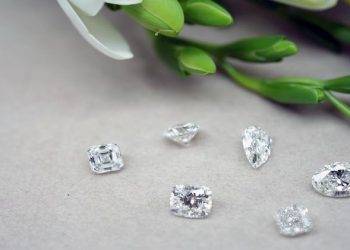Man made diamonds Sydney are becoming more popular as the years go by. These gemstones are created in a lab and have many benefits. One of these benefits is resale value. It is also known that they have a higher quality and are less expensive than traditional jewelry. They are also available in a variety of shapes. Cubic and octahedral are among the most common.
Cost of a lab-grown diamond
The price of Lab Grown Diamonds has fallen in recent years as technology has advanced. This means that you can now buy beautiful jewellery made from lab-grown stones for a fraction of the cost of a mined diamond.
As more people become aware of the environmental impact of mining diamonds, more and more consumers are choosing to buy eco-friendly alternatives. Lab-grown diamonds are a great option because they have the same chemical makeup and physical properties as mined diamonds.
Lab-grown diamonds are a lot cheaper than natural ones, and they look nearly identical. However, if you want to know what you are getting, you have to do some research. There are many factors that affect the cost of a lab-grown diamond, including the size of the diamond, the cut, the metal, the setting, and the clarity.
Although the cost of a lab-grown diamond has fallen significantly over the past few years, it is still not as affordable as a mined diamond. Despite this, lab-grown diamonds are still one of the best options for a beautiful ring.
Chemical Vapor Deposition (CVD) process
CVD (chemical vapor deposition) is a process used to make man made diamonds. These diamonds have the same physical properties as natural diamonds, but they are not formed naturally in the Earth. They are produced in labs by advanced technological processes.
The chemical vapor deposition process uses very high temperatures and pressures to create diamonds. This technique requires a thin slice of diamond, called a seed crystal, and a chamber filled with heated gases.
During the CVD process, carbon atoms attach to the seed crystal, forming atomic bonds. As the gas is heated, the seed crystal grows in layers, forming a diamond crystal.
Diamonds produced by the CVD process are typically of a very high quality and have exceptional clarity. They are also more environmentally friendly and cost-effective.
CVD diamonds are used in many applications, including erosion-resistant coatings in nuclear fusion reactors, high power electronics, and quantum optics. Their properties are strongly influenced by the impurities and grain structure of the diamond.
Cubic vs octahedral shapes
If you’re considering purchasing jewelry, you may be wondering whether man made diamonds are the same as mined diamonds. You need to be sure you’re buying the right kind of stone for your needs.
Natural diamonds are formed by the dissolution of carbon atoms into a small diamond seed. This process occurs under pressure and high temperature conditions.
Man-made diamonds are not created under these conditions, but are instead manufactured in a laboratory. The diamonds are subjected to treatments that allow them to change their color and clarity.
There are two main ways to create man-made diamonds: chemical vapor deposition and high-pressure, high-temperature crystal growth. Both methods produce a unique diamond crystal that is distinctive in shape.
Diamonds are compact and durable. They are made of carbon atoms and form a cubic crystal. However, they vary greatly in quality. Some stones are rare and highly irregular in outline. These can be difficult to spot.
Resale value
If you’re looking for a stunning diamond to make someone feel special, you may want to consider man made diamonds. They’re beautiful, affordable, and a great alternative to natural diamonds. However, they have a few drawbacks.
First, man made diamonds don’t retain much value after they’re sold. They’re often worth only around 10 to 35% of the original price. It’s important to keep in mind that the resale value of the diamond depends on its quality, the grading system used to assess the diamond’s quality, and the market.
There are also ethical issues with earth-mined diamonds. These include the carbon footprint, which can vary widely. And while it’s hard to know exactly how much they impact the environment, it’s estimated that a mine-origin diamond has a carbon cost of about 57kgs per carat.
As an alternative, lab-grown diamonds are more eco-friendly. While they are more expensive than natural diamonds, they have a much smaller carbon footprint, and the cost of electricity is less.














